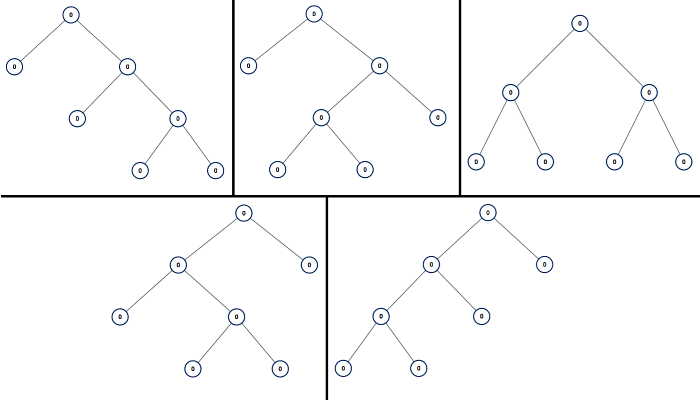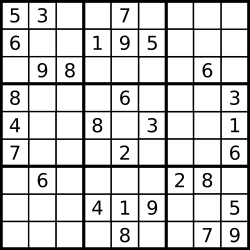Week 11: Hard Problems
1) Rabbits in Forest
There is a forest with an unknown number of rabbits. We asked n rabbits “How many rabbits have the same color as you?” and collected the answers in an integer array answers where answers[i] is the answer of the ith rabbit.
Given the array answers, return the minimum number of rabbits that could be in the forest.
Example 1:
Input: answers = [1,1,2]
Output: 5
Explanation:
The two rabbits that answered "1" could both be the same color, say red.
The rabbit that answered "2" can't be red or the answers would be inconsistent.
Say the rabbit that answered "2" was blue.
Then there should be 2 other blue rabbits in the forest that didn't answer into the array.
The smallest possible number of rabbits in the forest is therefore 5: 3 that answered plus 2 that didn't.
Example 2:
Input: answers = [10,10,10]
Output: 11
Constraints:
1 <= answers.length <= 10000 <= answers[i] < 1000
HINT
Use a data structure to keep track of the number of rabbits of each color.2) All Possible Full Binary Trees
Given an integer n, return a list of all possible full binary trees with n nodes. Each node of each tree in the answer must have Node.val == 0.
Each element of the answer is the root node of one possible tree. You may return the final list of trees in any order.
A full binary tree is a binary tree where each node has exactly 0 or 2 children.
Example 1:

Input: n = 7
Output: [[0,0,0,null,null,0,0,null,null,0,0],[0,0,0,null,null,0,0,0,0],[0,0,0,0,0,0,0],[0,0,0,0,0,null,null,null,null,0,0],[0,0,0,0,0,null,null,0,0]]
Example 2:
Input: n = 3
Output: [[0,0,0]]
Constraints:
1 <= n <= 20
HINT
You can create a TreeNode with: - TreeNode(int val) - TreeNode(int val, TreeNode left, TreeNode right)3) Valid Sudoku
Determine if a 9 x 9 Sudoku board is valid. Only the filled cells need to be validated according to the following rules:
Each row must contain the digits 1-9 without repetition. Each column must contain the digits 1-9 without repetition. Each of the nine 3 x 3 sub-boxes of the grid must contain the digits 1-9 without repetition. Note:
A Sudoku board (partially filled) could be valid but is not necessarily solvable. Only the filled cells need to be validated according to the mentioned rules.
Example 1

Input: board =
[["5","3",".",".","7",".",".",".","."]
,["6",".",".","1","9","5",".",".","."]
,[".","9","8",".",".",".",".","6","."]
,["8",".",".",".","6",".",".",".","3"]
,["4",".",".","8",".","3",".",".","1"]
,["7",".",".",".","2",".",".",".","6"]
,[".","6",".",".",".",".","2","8","."]
,[".",".",".","4","1","9",".",".","5"]
,[".",".",".",".","8",".",".","7","9"]]
Output: true
Example 2
Input: board =
[["8","3",".",".","7",".",".",".","."]
,["6",".",".","1","9","5",".",".","."]
,[".","9","8",".",".",".",".","6","."]
,["8",".",".",".","6",".",".",".","3"]
,["4",".",".","8",".","3",".",".","1"]
,["7",".",".",".","2",".",".",".","6"]
,[".","6",".",".",".",".","2","8","."]
,[".",".",".","4","1","9",".",".","5"]
,[".",".",".",".","8",".",".","7","9"]]
Output: false
Explanation: Same as Example 1, except with the 5 in the top left corner being modified to 8. Since there are two 8's in the top left 3x3 sub-box, it is invalid.
Constraints
board.length == 9board[i].length == 9board[i][j] is a digit 1-9 or '.'.
4) Predict the Winner
You are given an integer array nums. Two players are playing a game with this array: player 1 and player 2.
Player 1 and player 2 take turns, with player 1 starting first. Both players start the game with a score of 0. At each turn, the player takes one of the numbers from either end of the array (i.e., nums[0] or nums[nums.length - 1]) which reduces the size of the array by 1. The player adds the chosen number to their score. The game ends when there are no more elements in the array.
Return true if Player 1 can win the game. If the scores of both players are equal, then player 1 is still the winner, and you should also return true. You may assume that both players are playing optimally.
Example 1
Input: nums = [1,5,2]
Output: false
Explanation: Initially, player 1 can choose between 1 and 2.
If he chooses 2 (or 1), then player 2 can choose from 1 (or 2) and 5. If player 2 chooses 5, then player 1 will be left with 1 (or 2).
So, final score of player 1 is 1 + 2 = 3, and player 2 is 5.
Hence, player 1 will never be the winner and you need to return false.
Example 2
Input: nums = [1,5,233,7]
Output: true
Explanation: Player 1 first chooses 1. Then player 2 has to choose between 5 and 7. No matter which number player 2 choose, player 1 can choose 233.
Finally, player 1 has more score (234) than player 2 (12), so you need to return True representing player1 can win.
Constraints
1 <= nums.length <= 200 <= nums[i] <= 10^7